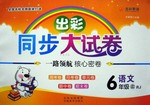题目内容
---Jenny, I think I’ll just have some coffee for a change.
---______.The coffee I bought yesterday is in the cupboard.
A. Change it, please B. Never mind
C. With pleasure D. Help yourself
D
【解析】
试题分析:考查交际用语。A.Change it, please不符合英语习惯, B.Never mind 没关系, C.With pleasure很乐意。句意是:——Jenny我想换成咖啡。——请随意,昨天我买的咖啡在橱柜里。故D正确。
考点:考查交际用语

练习册系列答案
 出彩同步大试卷系列答案
出彩同步大试卷系列答案
相关题目